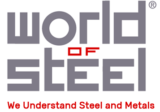Pipes are standardized following API and ISO rules.
These standards specify the technical delivery conditions for steel pipes, which are
related to:
• Steel grade designations.
• Casing and tubing grades.
• Manufacturing process and heat treatment requirements.
• Chemical composition.
• Minimum requirements for mechanical properties.
• Dimensions, masses and tolerances.
• Minimum requirements for non-destructive testing.
• Minimum requirements for product quality and logistic activities.
• Additional supplementary requirements.
• Product specification levels.
Steel grades: these are designated by a prefix letter and a number. The prefix letter which could be H, K, L, P, has no special meaning and its main purpose is to make
a phonetic difference to avoid misunderstandings. The number identifies the minimum yield strength in ksi (kilopounds per square inch). For example: in the
N80 grade, the “N” is an arbitrary denomination, while “80” refers to the Specified Minimum Yield Strength (SMYS), which in this case is 80 ksi.
Casing and Tubing grades: the different grades are classified into four main groups: 1, 2 , 3 and 4, and within each group, the different associated specified
yield strengths are determined.
Group Characteristics
Group 1 Covers low strength pipes and has no corrosion
resistance
Group 2 These pipes can be used in environments containing
H2S and strict process control during manufacturing is required, since the allowed
yield strength range is reduced by 50% compared to
Group 3 These are high strength pipes with no corrosion
resistance
Group 4 These are very high strength pipes with no corrosion
resistance
Manufacturing process and heat treatment requirements: steel pipes can be manufactured by either a seamless process or by an electric process by welding
steel plates into a rounded shape. Depending on the steel grade, some of them require no special heat treatment whereas for others it is mandatory to manufacture them following a specific heat treatment such as normalizing, quenching and tempering.
Chemical composition: this is established by the standards, which provide a very wide range of options for each element. For each particular grade, the minimum
and maximum limits of the main alloying elements are stated, as well as the maximum acceptable amount for residual elements which are detrimental to the
quality of the steel. As each pipe manufacturer defines its own actual chemical compositions, pipes supplied by different manufacturers can be designated with
the same grade, even though they may differ in terms of the chemical composition and the mechanical properties.
Minimum requirements for mechanical properties: the standard specifies the yield strength range, the minimum tensile strength, the toughness, the hardness and
the corrosion resistance for each one of the steel grades. Additionally, to guarantee homogenous heat treatment for high strength materials, the hardness
variation in the wall thickness must be within a defined range.
Dimensions, masses and tolerances: for each OD, the mass, the internal diameter, the wall thickness and the drift are specified for the different nominal linear
masses. Moreover, three length ranges are established for the different pipe applications.
